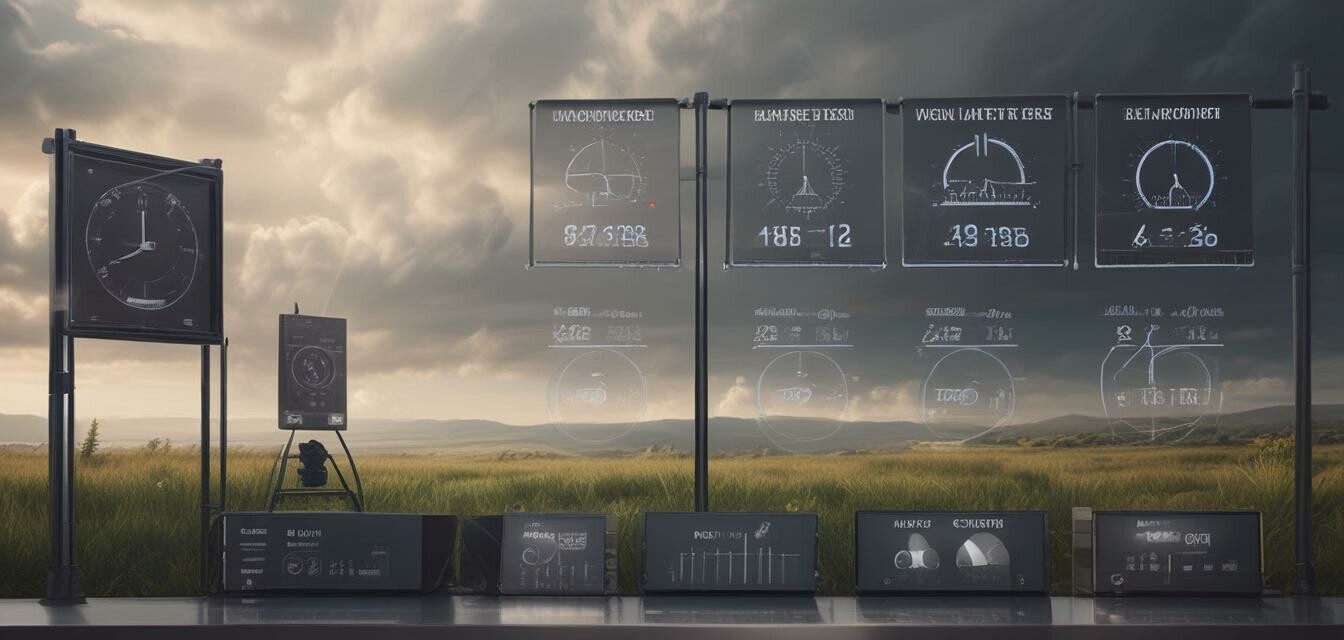
How to Read and Interpret Weather Data from Your Station
Key Takeaways
- Understanding different types of weather data enhances your forecasting ability.
- Regularly calibrating your weather station ensures accuracy.
- Utilizing mobile apps can simplify data interpretation.
- Data patterns often emerge over time, allowing for better short-term forecasts.
- Consulting online resources can enhance your knowledge of weather systems.
Operating a WiFi weather station can be an exciting endeavor, but it can also be daunting to understand the vast amount of data these devices provide. Whether you are a weather enthusiast or just looking to track local conditions, interpreting weather data accurately is essential. In this guide, we will explore how to read and interpret the various types of data collected by your WiFi weather station, ensuring you get the most out of your weather tracking experience.
Types of Weather Data to Monitor
Your WiFi weather station collects a variety of data points that can help you understand the current weather conditions. Below are some of the most common types of weather data you will encounter:
| Data Type | Description |
|---|---|
| Temperature | The current air temperature, typically displayed in Celsius or Fahrenheit. |
| Humidity | The amount of moisture in the air, represented as a percentage. |
| Barometric Pressure | Pressure exerted by the atmosphere, often an indicator of weather changes. |
| Wind Speed | The speed of the wind, usually measured in miles per hour or kilometers per hour. |
| Rainfall | A measure of precipitation over a specific period. |
Reading Temperature and Humidity
Temperature and humidity are two fundamental data points that help in any weather forecasting. Here’s how to interpret them:
- Temperature: Monitor temperature changes throughout the day. Morning highs often indicate an upcoming warm day.
- Humidity: High humidity levels can suggest a potential for rain, while low levels often correlate with clear skies.
Understanding Barometric Pressure
Barometric pressure is a vital clue for forecasting. Typically, falling pressure indicates a storm is approaching, while rising pressure suggests fair weather. Comparing barometric readings over time will give you a clearer picture of atmospheric trends.
Wind Speed and Direction
Wind data also plays a significant role in weather interpretation. Here are ways to analyze wind data:
- Wind Speed: A sudden increase in wind speed often signals incoming weather patterns, including storms.
- Wind Direction: Knowing from which direction the wind is coming can help determine if there's a system moving into your area.
| Wind Conditions | Implications |
|---|---|
| Calm (0-5 mph) | Stable weather, likely no immediate changes. |
| Moderate (6-15 mph) | Possible weather change soon; better watch for storm systems. |
| Strong (16+ mph) | Increased likelihood of storm activity or severe weather conditions. |
Precipitation Tracking
Tracking rainfall is crucial, especially when considering local conditions. To interpret this data effectively:
- Monitor daily and weekly rainfall totals. It helps you see patterns over time.
- Use rainfall data to forecast drought conditions or flood risks in your area.
Using Mobile Apps for Easy Interpretation
Many WiFi weather stations offer mobile apps that provide visual representations of your data. These apps can help streamline your data-reading process, making it easier to monitor conditions in real time. Look for features like:
- Graphical displays of temperature and humidity trends.
- Notifications for changing weather conditions.
- Historical data to compare current readings.
Common Mistakes and Misinterpretations
Even seasoned weather enthusiasts make mistakes. Here are some common pitfalls and how to avoid them:
- Relying too heavily on one data point; always consider the overall picture.
- Ignoring calibration; ensure your weather station is correctly set up.
- Misreading units; familiarize yourself with reading both Celsius and Fahrenheit.
Tips for Beginners
- Start with understanding the basics: temperature and humidity.
- Keep a weather journal to track conditions over time and improve your forecasting.
- Consult reliable online resources, like our buying guides, for more information.
Conclusion
Interpreting weather data from your WiFi weather station can feel overwhelming at first, but with practice and careful observation, you can develop your forecasting skills. By understanding the different types of data your station provides and how to read them effectively, you’ll be well-equipped to make informed predictions about local weather conditions. To enrich your knowledge further, don’t hesitate to explore our other articles under Tips and Tricks for more helpful advice and techniques.
Pros
- Enhances your understanding of local weather patterns.
- Encourages educational opportunities, especially for children.
- Provides real-time data to assist in planning daily activities.
Cons
- Can be overwhelming for beginners with complex data sets.
- Potential discrepancies in data if instruments are not properly calibrated.
- Initial setup may require technical knowledge.